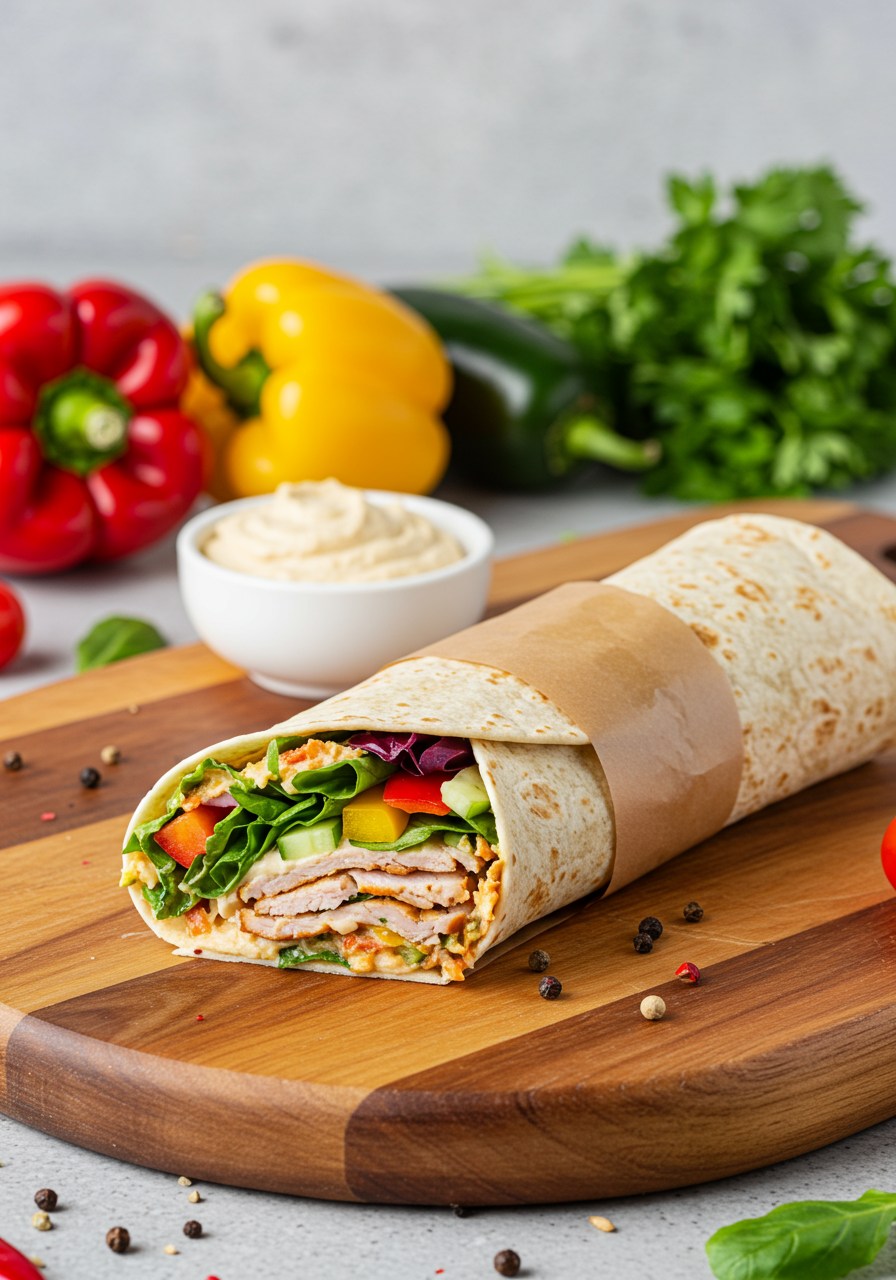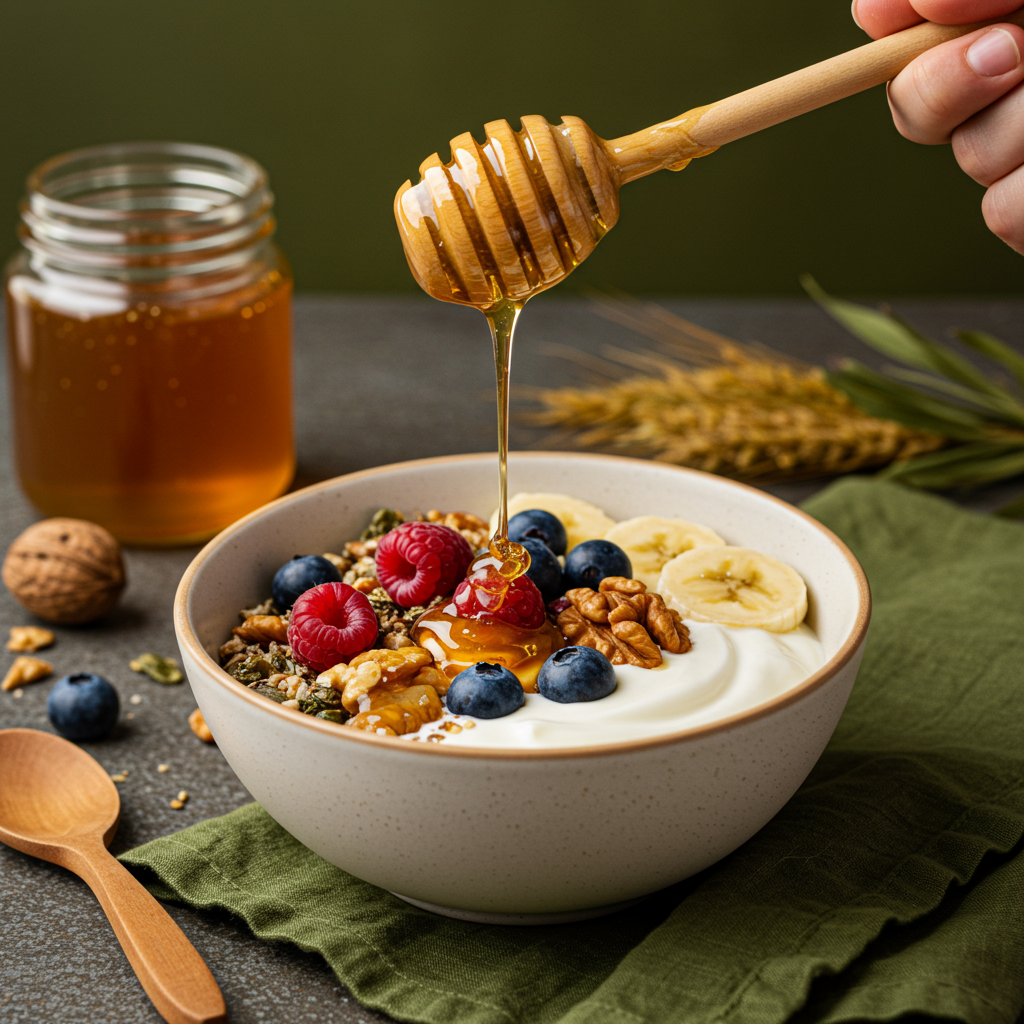Quick take (save this):
-
“Free sugar” ≠ free-for-all. UK guidance: keep added/free sugars ≈ ≤30g/day (~7 tsp). UK surveys say most people are closer to 50g/day (~13 tsp). On Halloween, some folks can blast past 16× that.
-
Moderation beats deprivation. Pair sweets with protein/fibre to dodge blood-sugar spikes and the crash.
-
Best → Worst (ranked):
1) Fruit/veg/dairy (natural sugars) → 2) Honey/maple/agave → 3) Table sugars → 4) Sweeteners (use thoughtfully) → 5) Ultra‑processed syrups (glucose/fructose mixes) -
Label basics: “Added sugars” on the panel count toward your limit; natural sugar in whole fruit/milk doesn’t.
The Sugar Ladder (from “only sometimes” → “everyday okay”)
5) Ultra‑processed sweet treats — the “only sometimes” zone
Look for these names: glucose syrup, glucose‑fructose syrup, high‑fructose corn syrup (HFCS).
Where they hide: sweets, toffee, chocolate bars, biscuits, jams, soft drinks, some beers.
Why it’s a problem: These are added/free sugars with almost no fibre or micronutrients. They absorb fast in the small intestine → rapid spikes → crash → cravings. Food companies often pair them with fats to make them extra moreish. Research links high HFCS intake with a higher risk of type 2 diabetes; in the UK, average intake is ~500g/year.
Smarter play: If you’re going to have them, eat them after a real meal (protein + fibre on board = gentler blood‑sugar rise). Keep portions small; don’t let them be your main snack.
4) Sweeteners — a tool, not a lifestyle
Names to know: aspartame, sucralose (artificial); stevia, monk fruit (from plants).
Where they show up: “diet/zero” drinks, low‑sugar yogurts/ice creams, sugar‑free sauces, some ready meals and cakes.
The deal: Very sweet, few or zero calories. They can help reduce sugar intake, useful for people with diabetes or anyone cutting calories. Scientists debate side effects: some data finds benefits for blood sugar; other data hints at bigger appetite in some contexts (e.g., sucralose in certain studies).
Safety note you’ll hear a lot: WHO’s cancer-research arm tagged aspartame as a “possible carcinogen,” but food‑safety bodies still set an acceptable daily intake of 40 mg/kg body weight—roughly 14 cans of diet soda for an average adult, which most people don’t hit.
Smarter play: Use in moderation. If you want a “more natural” route, stevia or monk fruit can work—just go light (monk fruit can be ~100× sweeter than sugar). Big picture: train your taste buds to like less sweet over time.
3) Table sugars — fine-tune, don’t free‑pour
Common names: caster, granulated, demerara, coconut sugar.
Where they are: baking/cooking, packaged desserts.
Reality check: They’re all basically sucrose and nutritionally similar (same calories, tiny mineral differences). They count as free/added sugars and absorb fast → energy now, no nutrients.
Smarter play: When baking, swap ~½ the sugar for mashed banana, dates, or apple purée. Result: sweetness plus fibre.
2) Natural sugars in sweet spreads — a small step up
Examples: honey, maple syrup, agave (pure, not diluted with corn syrup).
What’s better here: Slightly lower glycaemic impact than white sugar and trace minerals—but they still count as free sugars and hit your 30g/day budget.
Smarter play: Use a drizzle, not a pour. Great to balance a plain Greek yogurt/kefir + berries bowl.
1) Natural sugars in fruit, veg & dairy — green light (within reason)
Examples: apples, peppers, milk/yogurt.
Why these win: Here, sugar comes packaged with fibre, protein, vitamins, minerals, and polyphenols. That combo slows absorption, so blood sugar rises more gradually vs. a biscuit. These make the best sweet snacks, even on an empty stomach.
Real‑life Halloween strategy (3 moves)
-
Pre‑game with dinner: Protein + fibre (e.g., chicken + veg + rice) before trick‑or‑treating = fewer sugar spikes.
-
Pick favourites on purpose: Choose 3–5 treats you truly love, skip the “meh” pile.
-
Pair and park: Eat sweets with a glass of milk, handful of nuts, or yogurt. Save the rest for later in the week.
Ingredient red flags (label scan in 10 seconds)
-
Added/free sugars → count toward 30g: sugar, syrup, dextrose, fructose, HFCS, fruit juice concentrates.
-
Ingredients are listed most → least: if sugar/syrup is top‑3, it’s a sweet bomb.
-
For snacks: aim for ≤8–10g added sugar when you can (not a law—just a handy guardrail).
FAQs
Is honey “healthier” than sugar?
Not really. Honey has some trace nutrients and can soothe a cough, but your body still treats it as a free sugar. It still counts toward that 30g/day.
What can I replace sugar with to lose weight?
Sweeteners can help because they cut calories—but results vary. Some people find they crave more later. The most reliable play: eat fewer super‑sweet foods overall and anchor meals with protein + fibre.
Best sweetener for arthritis?
There’s no proven sweetener that specifically helps arthritis. What helps most: less overall sugar → less inflammation and easier calorie control.
Are sweeteners okay for diabetics?
Often yes, in moderation. They can reduce carbs/calories while keeping things palatable. Still make room for real foods, and check in with your healthcare team.
Quick recap / checklist
Daily:
□ Hit protein + fibre at meals (keeps cravings quieter).
□ Fruit/veg/dairy = go‑to sweet fixes.
□ Read labels for added sugars.
When you want dessert:
□ Pair sweets with protein/fat (milk, nuts, yogurt).
□ Eat them after a meal, not on an empty stomach.
□ Keep added sugar ≲30g/day on average.
Shopping/baking hacks:
□ Watch for glucose/fructose syrups in the top ingredients.
□ Swap ½ the sugar in recipes for banana/dates/apple purée.
□ If using sweeteners, go light (stevia/monk fruit) and train your palate down.
Bottom line: You don’t need to ditch sweet things—you just need better timing, better pairings, and smaller doses. That’s how you keep the sweet and skip the crash.







Share:
Pre- & Post-Workout Bites for Real Humans
Immune-Smart Snacks for Peak Season